Clean air zones: where are Britain's low-emission zones?
With the extension of the ULEZ and many more cities planning to follow suit, here’s where to find low-emission zones & how much you'll pay
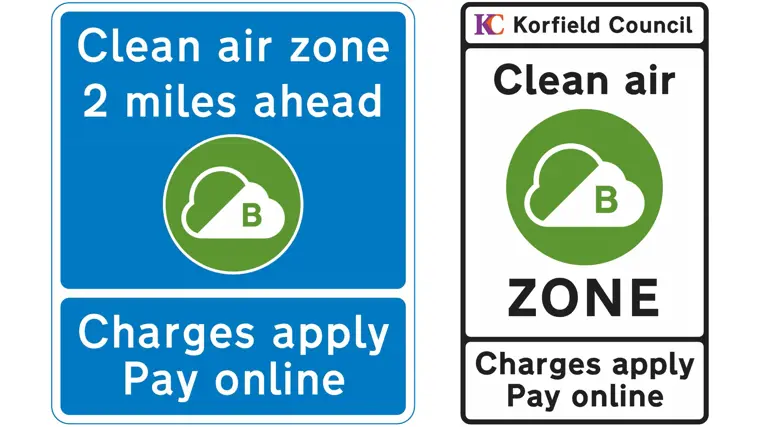
With many drivers, especially diesel owners, now facing a daily £12.50 charge to drive into the extended London Ultra Low Emission Zone (ULEZ), similar charge schemes are starting to be planned for and introduced across the UK.
Clean air schemes have been introduced in Bath, Birmingham and Portsmouth, with more schemes planned in areas including Manchester and Newcastle. These low-emission zones target older, more polluting vehicles, in an effort to cut toxic air pollution. Cameras will monitor traffic to ensure that fees are paid, with the threat of fines if drivers fail to do so.
Diesel owners are the worst affected by these schemes, as most diesel cars sold before September 2015 don't meet the latest emissions standard, known as Euro 6, making them subject to the charges.
These account for around 9.5 million of the 12.9 million diesel cars on British roads.
The majority of diesel vans sold before September 2016 will need to pay too. Petrols built since 2006 will largely be unaffected, as these are cleaner than older diesels, along with all electric cars and most hybrids.
Since 2015, more than 60 local authorities have been ordered to tackle illegal levels of air pollution, which is why many are now in the process of introducing clean air zones.
A new report from Public Health England, an arm of the Department of Health, has recommended that every council considers setting up such a zone to improve air quality.
London's Ultra Low Emission Zone (ULEZ) came into force on 8 April 2019 and was extended in October 2021, imposing daily tolls of £12.50 per day for affected cars and vans, and £100 for lorries.
Birmingham set up a similar scheme in June 2021, charging £8 per day for cars and vans, rising to £50 for lorries, buses and coaches. Eventually, almost 20 councils could set up clean air zones, including some Scottish cities that plan to ban older vehicles from driving in city centres altogether. Other areas, including Leeds and Sheffield, are looking to set up zones that charge lorries, buses and taxis - but not private cars or vans.
You can see full details of the vehicles affected by clean air zone charges at the bottom of the page. Scroll down for more details of what's proposed in each clean air zone.
What are clean air zones and low-emission zones?
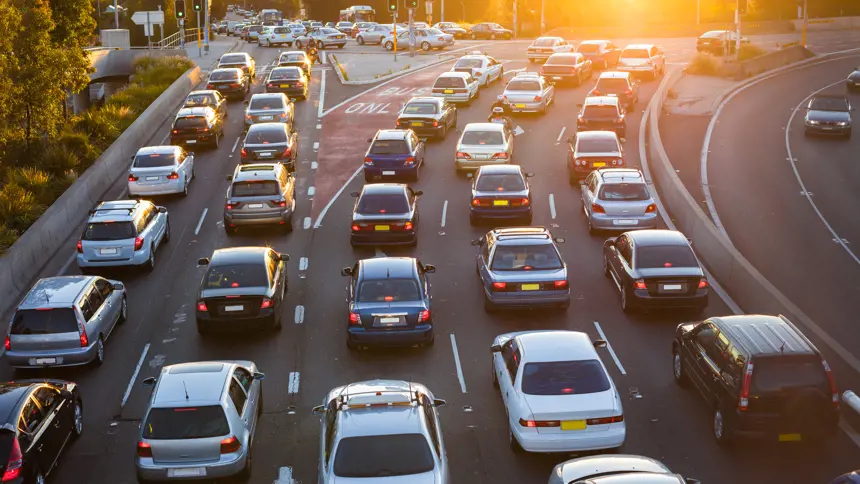
Clean air zones are set up by councils in areas where air pollution exceeds European legal limits. This ranges from improving traffic flow to charging the most polluting vehicles (mostly older diesels) a daily fee. These charging schemes are also known as low-emission zones. Government rules require income from the zones to be used for their operating costs or for other air quality measures.
Although not all clean air zones involve vehicle charges, an increasing number of councils plans to impose fees for the most polluting vehicles that drive through their zones. Many plan to do so using automatic number plate recognition cameras (ANPR) to track vehicles and check their emission rating.
A report into air pollution by Public Health England has said that clean air zones would be most effective if operated across the country. Entitled 'Review of interventions to improve outdoor air quality and public health', it stated: "If some such local measures are applied at scale, they have much greater potential to lead to reductions in population-level exposure to air pollutants."
The report did concede that the public would be unlikely to accept large numbers of clean air zones, but more restrictive policies are planned. Further into the future, zero-emission zones will bring in much stricter limits: some mayors want petrol and diesel cars to be banned by 2030 in their cities.
Cars exempt from clean air zone and low-emission zone charges
All clean air zones are expected to comply with government guidelines which make the most modern and cleanest vehicles exempt from CAZ charges. These vehicles comply with recent emission standards known as Euro 4, 5 and 6. These include:
- Petrol cars meeting the Euro 4 standard or later (including virtually every car sold since January 2006)
- Diesel cars that meet the tougher Euro 6 standard (including virtually every car sold since September 2015)
- Electric cars
A Euro 6 standard also applies for diesel vans. This only became mandatory for new vans in September 2016, so the majority of compliant vehicles are still relatively new. Lorries and coaches registered since 2014 will also be exempt, as will motorbikes registered over the past ten years.
Clean air zones and low-emission zones: current and future
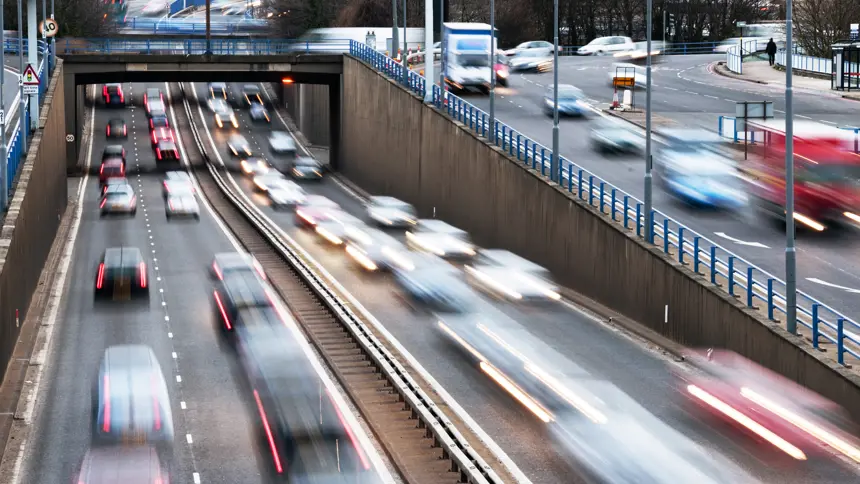
Aberdeen low-emission zone
Low-emission zone in operation since 30 May 2022, with a two-year grace period
Vehicles affected all vehicles failing to meet minimum emission standards
Low-emission zone charge £60
Aberdeen is one of four Scottish cities where low-emission zones are being planned. The scheme will include both heavy-duty vehicles (HGVs) and light passenger and goods vehicles (cars and vans). Diesels should comply with Euro 6 standards, while petrols face less stringent restrictions at Euro 4.
The affected area spans from Willowbank Road and Virginia Street in the south to Skene Street and West North Street in the north.
Bath & North East Somerset clean air zone
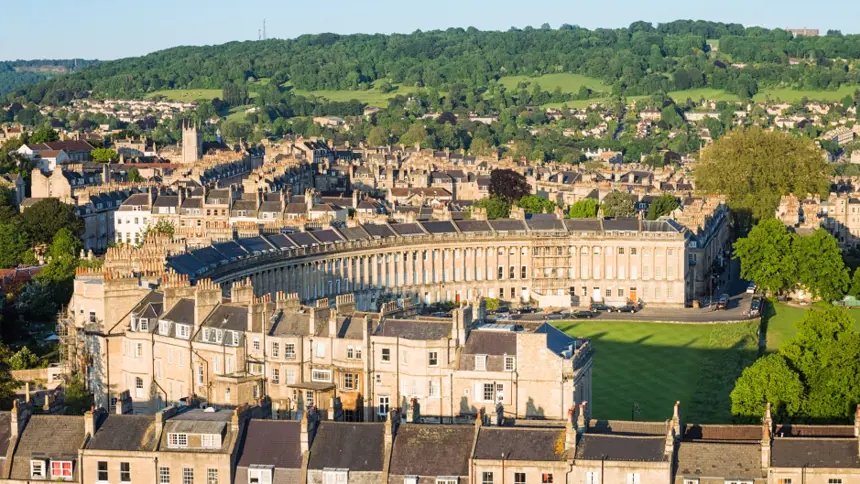
Clean air zone in operation
Vehicles affected all vehicles failing to meet minimum emission standards, apart from private cars and motorbikes
Clean air zone charge £9 for non-compliant vans and taxis; £100 for lorries and buses
Bath and North East Somerset Council operates a Class C clean air zone, which means taxis and private hire vehicles, vans and LGVs, and buses and HGVs, are all subject to a daily charge to enter the area. This ranges from £9 for smaller vehicles to £100 for larger vehicles. Miss a payment and you could face a fine of £120, which is halved if paid in the first 14 days, and raised to £180 if not paid within 28 days.
The Council is keen to remove the non-compliant vehicles from its roads (Euro 1-5 diesel or Euro 1-3 petrol), and there are various grants available to help local businesses move into something more efficient. These include up to £4,500 for taxis and vans, up to £20,000 for HGVs and up to £35,000 for buses and coaches.
Currently, private cars and motorbikes are exempt from charges, but this may soon be reviewed.
The chargeable zone covers an area including Royal Victoria Park, Kingsmead, Bathwick and Walcot.
Birmingham clean air zone
Clean air zone in operation since 1 June 2021
Vehicles affected all vehicles failing to meet minimum emission standards
Clean air zone charge £8 for non-compliant cars; £50 for lorries and buses
Birmingham is second only to London in its peak air pollution figures, with air pollution from nitrogen oxides well above the legal limit of 40µg/m3.
City councillors have approved proposals for a large clean air zone within (but not on) the A4540 middle ring road. All vehicles that don't meet the minimum emission standards (including most diesel cars sold before September 2015) incur a daily charge, which is set at £8 for cars, taxis and LGVs, and £50 for coaches, buses and HGVs. Fail to pay within 13 days, and expect a £120 fine (which is reduced to £60 if paid within 14 days of receiving it).
At the same time, Birmingham is working to increase the amount of electric vehicle charging points and is ordering hydrogen-powered buses. There are also various financial incentives to get drivers into more efficient vehicles.
Bristol clean air zone
Clean air zone due to start 28 Novemebr 2022
Vehicles affected all vehicles failing to meet minimum emission standards
Clean air zone penalty £9 for non-compliant cars; £100 for lorries and buses
Bristol City Council estimates that 71% of its vehicles are compliant, so only a minority should face charges for entering the zone.
Private petrol and diesel cars, along with taxis and LGVs, will be subject to a £9 daily charge. This is increased to £100 for buses, coaches and HGVs. Hospital visitors will be able to apply for exemptions, as will individuals earning less than £24,000 per year or £12.45 per hour.
As with many clean air zones, charges do not apply to petrol vehicles that meet at least the Euro 4 standard, and diesels that are Euro 6 compliant. The city is also offering loans and grants to assist in the uptake of greener cars, and is optimising bus lanes and traffic light timings to reduce idling.
Cambridge clean air zone
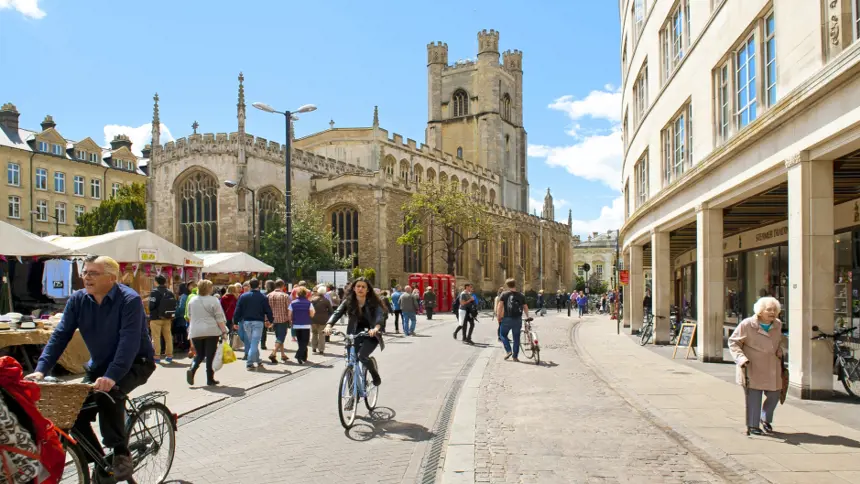
Clean air zone being examined
Vehicles affected unknown
Cambridge has recently published its Air Quality Action Plan, which includes mention of a feasibility study into a Clean Air Zone. The Council believes that around 100 deaths occur locally that can be attributed to unacceptable air pollution, and that 45% of all local carbon emissions are a result of transport.
A clean air zone is just one of the suggested ways to tackle the air pollution problem; Cambridge is also improving public transport, as well as its cycling and walking routes.
If a clean air zone were to come into play, it's likely that, at least initially, it would only affect HGVs, buses and coaches.
Cardiff clean air zone
Clean air zone feasibility study underway
Vehicles affected unknown
Cardiff has the worst pollution in Wales, and NOx levels exceed legal limits in some areas of the city. As such, it was told to investigate the possibility of a clean air zone by the Welsh government. The Cardiff and Vale Health Board area sees around a claimed 220 deaths as a result of nitrogen dioxide pollution, and many more people falling ill due to poor air quality.
The city has already closed off Castle Street to private vehicles, making it a bus-only route. Other measures, yet to be implemented, include reducing bus emissions by retrofitting Euro 6-compliant technology, implementing electric buses, and revising taxi policies. The council has also enforced 20mph limits to many through roads to tackle pollution and maintain traffic flow.
The city is also considering a clean air zone; the area currently under review spans the area bordered by Central Station, Queen Street Station and the castle.
Derby clean air zone
Clean air zone unlikely
Derby is one of five councils outside London that have been told to set up clean air zones to deal with air pollution that's far in excess of legal limits (more than 10µg/m3 over the 40µg/m3 standard in Derby's case).
It has published a consultation with three options, two of which include charging cars that don't meet minimum emission standards.
However, the council says that its preferred option involves restricting traffic on Stafford Street, part of the city's inner ring road where air pollution is particularly bad. The council would also set up a scrappage scheme, which would offer drivers of older cars one of three incentives to scrap them: a large discount towards an electric car; a smaller amount of money towards a modern petrol or diesel car; or credit towards public transport and car-sharing clubs.
A second option would create a clean air zone within the inner ring road. Cars, vans, lorries and buses would be charged if they don't comply with the emissions requirements. There would also be traffic restrictions on Stafford Street, as well as a scrappage scheme.
A huge clean air zone within the city's outer ring road is part of a third option. It would be bordered by Queensway in the East and Raynesway in the West, going as far north as the roundabout at Little Eaton and to Warwick Avenue in the South. A scrappage scheme covering residents of the zone, as well as commuters to Derby, would also be introduced.
It looks like a clean air zone does not form part of the city council's priority at the moment - rather than penalising drivers of less efficient vehicles, the solution is to manage traffic flow better. That's not to say a clean air zone won't follow in a few years, though.
Dundee low-emission zone
Low-emission zone in operation since 30 May 2022, with a two-year grace period
Vehicles affected all vehicles failing to meet minimum emission standards
Low-emission zone penalty £60, doubling after each offence
Another Scottish town that's expected to ban the most polluting vehicles and fine them if they drive into a low-emission zone, and again, we're talking Euro 4 for petrol and Euro 6 for diesel vehicles.
The low-emission zone is currently under discussion and is expected to come into force in summer 2022, though a two-year grace period should allow drivers of more polluting vehicles to swap them out for greener alternatives.
Like Aberdeen, penalty charges will start at £60, doubling for each re-offence onto a cap of £480 for cars and LGVs, and £960 for buses and HGVs.
Edinburgh low-emission zone
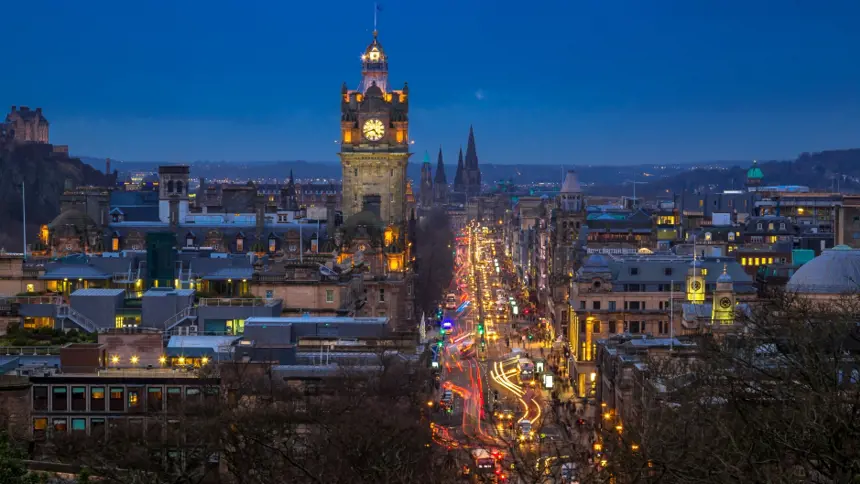
Low-emission zone in operation since 31 May 2022, with a two-year grace period
Vehicles affected all vehicles failing to meet minimum emission standards
Scotland's capital city suffers from the worst pollution in the country, with more areas of illegal air quality than anywhere else north of the border. It's currently working on plans for a low-emission zone to tackle this.
Council documents reveal that a city-wide zone is under consideration, as are a series of mini-zones in the areas of poorest air quality. Vehicles failing to meet modern emission standards will be banned from the affected areas entirely and the Council is considering including private cars in the scheme. Pedestrians and cyclists will be given greater priority at the same time, according to one of the council's transport leaders.
As with many councils, plans were put on pause due to the coronavirus outbreak. Edinburgh expects to have measures in place by May 2022.
Fareham clean air zone
Clean air zone unlikely
Fareham residents were consulted over a proposal to introduce a clean air zone on the A27 and A32, along the south side of the town centre, where air pollution is at its worst. Of 11 measures proposed, 1,120 respondents were in support of nine.
Only four of the nine supported measures are being actioned currently, including improved cycling and walking routes, live information at bus stops for a clearer and smoother journey, improved traffic signals and a scheme to help taxi drivers swap out polluting models for more efficient alternatives. A clean air zone is unlikely for the foreseeable future.
Glasgow low-emission zone
Low-emission zone phase 1 for buses in place, phase 2 for all vehicles planned for 1 June 2023
Vehicles affected all vehicles failing to meet minimum emission standards
Clean air zone penalty £60, doubling after each offence
Glasgow's low-emission zone came into force at the end of 2018. Initially, only local buses in the centre of the city are affected.
The city council plans to extend restrictions to all vehicles, including older petrol and diesel cars, from 1 June 2023. The zone will cover the same central area, which is bordered by the River Clyde, M8 and High Street.
It is the first test of the penalty model in Britain, where the most polluting vehicles are banned from driving into the zone. Drivers will be sent a penalty if they try. Like Edinburgh and Aberdeen, the fine amounts will start at £60 and double for each re-offence with the same caps set at £480 for cars and vans, and £960 for buses and HGVs.
Leeds clean air zone
Clean air zone scrapped
Leeds' clean air zone was approved by the government to encompass a huge area, including the city centre, and a large segment to the north, extending to the outer ring road. It was later scrapped, as councillors deemed it unnecessary thanks to drivers opting for hybrids and efficient models.
£6 million had already been spent on around 300 cameras to police the system.
Leeds is instead committed to electrifying its fleet, and the fleet of many businesses with the option to 'try before they buy' in partnership with Highways England. The council is also upping the ante with more charging points, and improving walking and cycling routes, too.
London Ultra Low Emission Zone (ULEZ)
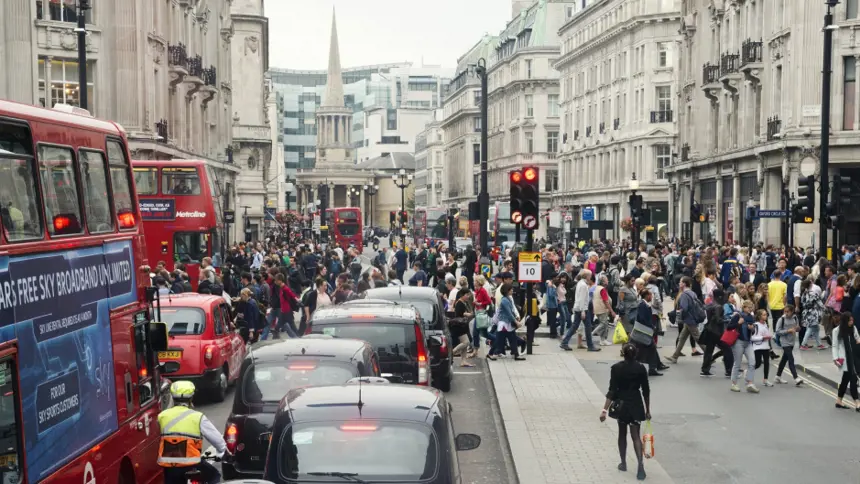
ULEZ in operation, extended in October 2021
Vehicles affected all vehicles which don't meet minimum emission standards
Ultra-low emission charge £12.50 per day for affected cars; £100 for lorries
The capital's atrocious air quality is expected to be more than double the legal limit in some areas this year, which is why London became the first city to introduce a low-emission zone based on the national emission standards.
The ULEZ will use the same criteria as other clean air zones, imposing a daily £12.50 fee on all but the latest diesel cars and vans, as well as a £100 day rate for lorries that are more than five years old. The zone is currently limited to the very centre of London, but it expanded on 25 October 2021, out to the North and South Circular roads.
London is also planning smaller zero-emission zones in the capital, where all vehicles will be charged unless they are plug-in hybrid, electric or hydrogen vehicles that can run without any exhaust emissions.
Manchester clean air zone
Clean air zone May 2022 plans scrapped, new plans under reconsideration
Vehicles affected non-compliant lorries buses and taxis, plus vans from June 2023
Clean air zone charge £7.50 for vans and taxis, £100 for lorries and buses
There are 152 stretches of road in Greater Manchester, covering seven local authorities where NOx levels exceed legal limits, and the widespread pollution is set to result in one of the biggest clean air zones in the country.
The latest plans don't involve privately-owned cars. Instead, the Greater Manchester Combined Authority has proposed setting up a zone across the ten Greater Manchester councils from 30 May 2022, which would impose a £60 daily charge on non-compliant buses, coaches and lorries, and a £7.50 charge for taxis.
LGVs would then be included in the scheme from 1 June 2023, with a £10 charge for non-compliant vehicles.
Greater Manchester was exploring the idea of differential parking charging, where vehicles could be charged based on their emissions, but these have now been discounted.
Newcastle low-emission zone
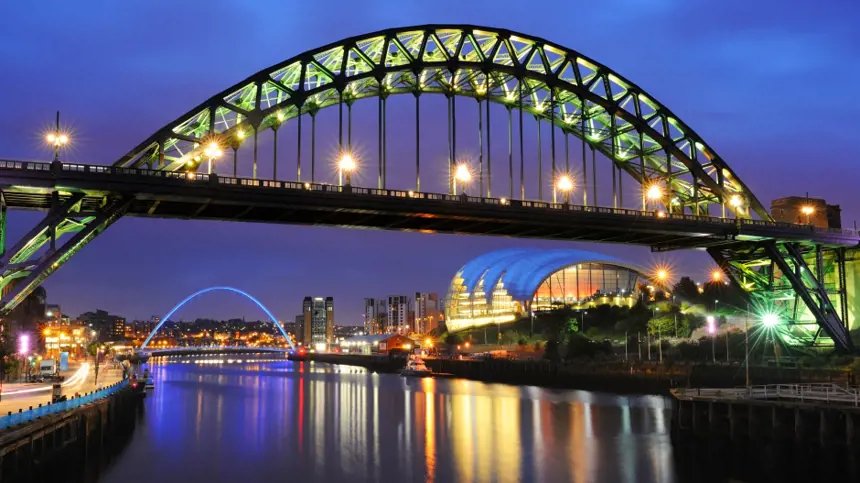
Low-emission zone proposed for late 2022/early 2023
Vehicles affected buses, lorries and taxis; potentially cars and vans
Air pollution exceeds legal limits on the Tyne Bridge and its approaches, as well as part of the Coast Road in North Tyneside and areas of the A1 Western Bypass.
Newcastle City Council is considering imposing a clean air zone that applies to all vehicles in the centres of Newcastle and Gateshead. However, a council study found that it was unlikely to improve air quality to within legal limits soon enough, so the local authority is proposing a series of alternative measures that are likely to affect all road users.
A low-emission zone for buses, lorries and taxis has been suggested for Newcastle City Centre and Gateshead Town Centre, in conjunction with tolls on city centre bridges, which would apply to most vehicles with the exception of public transport and the most economical hybrid and electric cars.
Lorries and vans would be banned from the Central Motorway between the Tyne Bridge and Coast Road during peak traffic hours in the morning (7am to 10am) and evening (4pm to 7pm). The Council is also considering a scrappage scheme for residents with older vehicles, in order to help them upgrade.
Oxford zero-emission zone
Zero-emission zone in operation
Vehicles affected all vehicles that don't run on electric power
Oxford has had a low-emission zone in place since 2014 but this has so far only affected buses. It's planning on toughening its approach considerably by extending a zero-emission zone. This will only be free to electric or hydrogen-powered vehicles. A charge would be imposed on other vehicles.
The council proposed introducing a zone gradually, starting with a small area in the centre of Oxford, around Cornmarket Street. This was approved in March 2021 and is expected to be active by February 2022. Charges are set to be between £2 and £10 per day, during the active hours of 7am to 7pm. These costs will double in August 2025.
Further restrictions are planned for non-local buses, vans and lorries from 2025. They will need to be zero-emission vehicles in order to drive free of charge through a much larger zone, encompassing the majority of the city centre. The station will be just outside the boundary in the West, and it will cover an area up to Magdalen College in the East.
Those restrictions will extend to all vehicles by 2035, but other vehicles may still be able to drive in the city centre for a fee.
Portsmouth clean air zone
Clean air zone Launched in November 2021
Vehicles affected non-compliant heavy goods vehicles, buses, taxis and private hire vehicles
Clean air zone charge £10 per day for vans and taxis, £50 per day for lorries and buses
Portsmouth City Council has introduced a new clean air zone in central Portsmouth. This zone charges HGVs, buses, coaches, taxis and vans which do not comply with the emissions restrictions that are now in place. In order for any of these vehicles to be permitted to drive for free within the zone, they must either meet the Euro 6 emission standard (diesel) or the Euro 4 emission standard (petrol).
This CAZ covers a large proportion of South West Portsmouth. Private vehicles like cars and motorbikes are currently exempt from these charges and can drive freely within the clean air zone.
Reading clean air zone
Clean air zone under consideration
Vehicles affected unknown
Reading Borough Council is planning to consult residents over the introduction of a clean air zone to improve air quality, even though nitrogen oxide levels were expected to comply with legal limits.
The type of vehicles and costs are still under consideration, as is the scope of the zone: officials are examining a wide area, as council documents speak of "tackling higher polluting vehicles travelling through the Reading borough".
Sheffield clean air zone
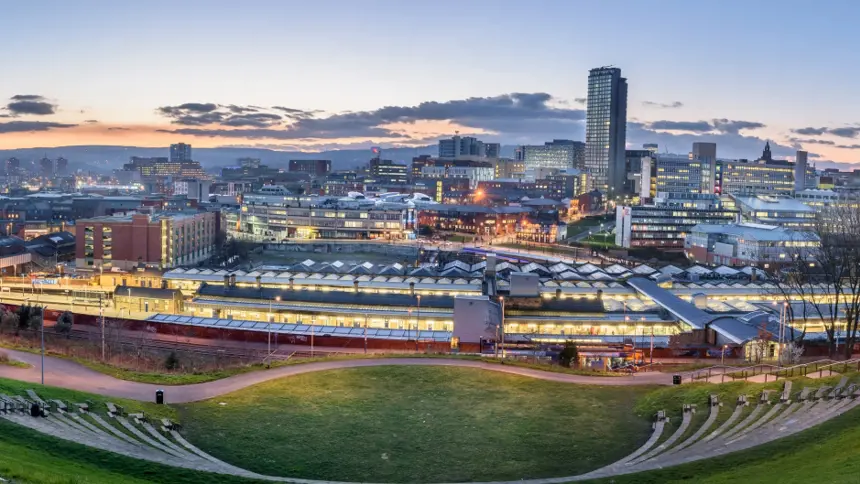
Clean air zone planned for early 2023
Vehicles affected lorries, buses, taxis and vans that don't meet minimum emission standards
Clean air zone charge proposals suggest £10 per day for affected vans and taxis; £50 for lorries and buses
Sheffield City Council has announced proposals for a clean air zone on, and within, the inner ring-road, which would affect most vehicles apart from private cars.
Taxis and vans that don't meet the minimum emission standards below will be subject to a £10 daily charge under the plans. Drivers of older lorries, buses and coaches will have to pay £50 per day.
In addition, the council has said that it is considering introducing anti-idling zones which would require drivers to switch off their engines when parked; retrofitting buses with cleaner engine technology; and potentially a small-scale scrappage scheme for low-income drivers.
High air pollution averages 51µg/m3 in some areas and the council has quoted NHS studies that suggest up to 500 people die early each year in Sheffield because of conditions linked to air pollution.
Slough clean air zone
Clean air zone proposal is being examined
Vehicles affected taxis, buses, coaches, lorries and vans
Slough council has ruled out clean air zone charges for cars, but is considering charges for other types of vehicles.
The proposals, set out in its low-emission strategy, published in August 2018, are still at an early stage, with details of the areas under review, and the vehicles that could be affected, and are undecided.
Warrington clean air zone
Clean air zone proposal being examined
Vehicles affected unknown
Warrington estimates that there were 95 premature deaths in 2013, due to pollution from tiny exhaust particles alone. Even though pollution is predicted to be within EU legal limits currently, the borough council is still considering introducing a clean air zone.
The council is looking into the viability and effectiveness of a zone and says that the location and types of vehicle affected will form part of this. The study is part of the council's latest local transport plan, which is expected to be announced in a consultation document.
York clean air zone
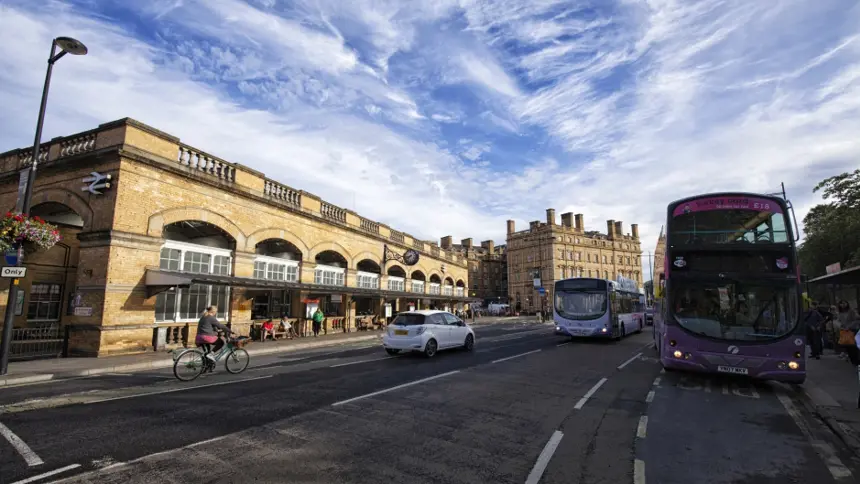
Clean air zone in operation
Vehicles affected buses failing to meet minimum emission requirements
Figures from York City Council suggest that buses only account for three per cent of traffic in the city but cause 27 per cent of pollution. That's why the city’s clean air zone only affects buses at this stage. The council agreed to set up a £1.64 million fund for bus operators to upgrade their vehicles to the required standard. Other work includes reducing idle times of buses and helping taxi drivers move into greener vehicles.
HGVs likely to follow with the next expansion of this CAZ. York's clean air zone is a voluntary action rather than a measure advised by the government.
Clean air zones: exempt vehicles
Most clean air zones are expected to exclude or charge vehicles that fail to meet the emission standards below. However, there are likely to be exceptions, particularly for the zero-emission zones being planned by London and Oxford.
| Vehicle type | Min. emission standard to be exempt |
| Motorbikes | Euro 3 (all models registered since Jul 2007) |
| Cars & small vans | Petrol Euro 4 (Jan 2006) Diesel Euro 6 (Sep 2015) |
| Vans & minibuses | Petrol Euro 4 (Jan 2007) Diesel Euro 6 (Sep 2016) |
| Lorries | Euro VI (Jan 2014) |
| Coaches and buses | Euro VI (Jan 2014) |
| Historic vehicle | More than 40 years old |
